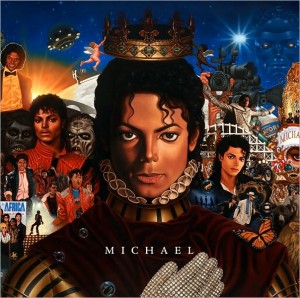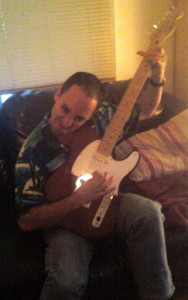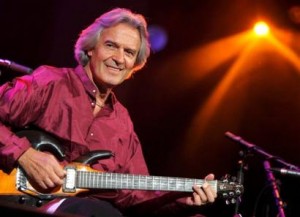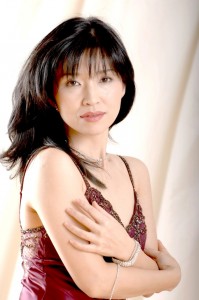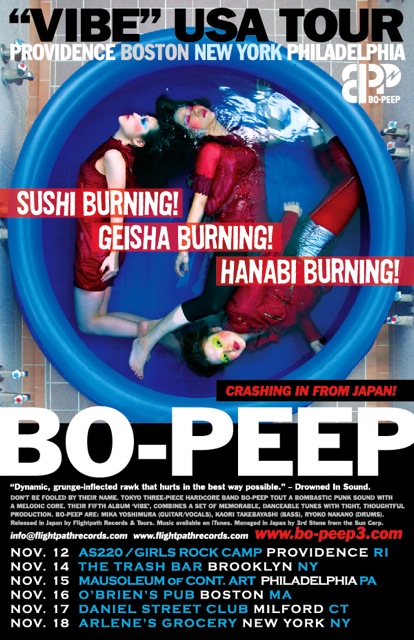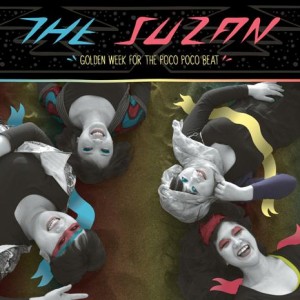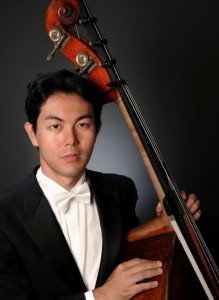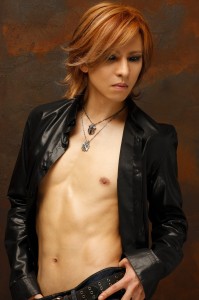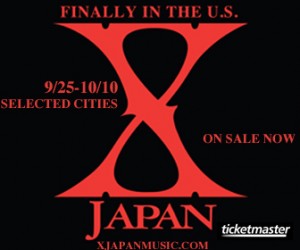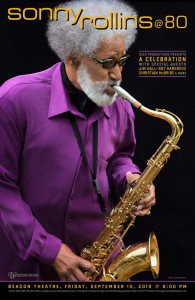WIT Life #146: 明けましておめでとうございます!
WITLife is a periodic series written by professional Writer/Interpreter/Translator Stacy Smith (Kumamoto-ken CIR, 2000-03). She starts her day by watching Fujisankei’s newscast in Japanese, and here she shares some of the interesting tidbits and trends together with her own observations.
A big akemashite omedetou gozaimasu to everyone! 今年もよろしくお願いいたします。 I hope everyone had a good end to the year and that you are feeling ready for the Year of the Rabbit that we have now entered. I spent the night of 元旦 (gantan) or New Year’s Day with co-workers from the Japanese restaurant that I used to waitress at, and we enjoyed osechi ryouri in lacquer boxes and bowls of ozouni as we watched 紅白歌合戦 (kouhaku uta gassen) or the Red and White Singing Contest. The white or men’s team won for the 6th consecutive year with a healthy margin of over 50,000 votes.
Aside from the usual vapid J-Pop and classic enka, I was really struck by singer Kana Uemura’s トイレの神様 (toire no kamisama), or The Toilet Goddess. This acoustic ballad is a whopping almost ten minutes long, and it tells the story of Read More
 Did you or your friends write or hear any songs about your JET experience, your town, your region, or anything JET-related?
Did you or your friends write or hear any songs about your JET experience, your town, your region, or anything JET-related?
We know a bunch of songs have been written by some number of the 50,000+ JET alumni over the 23 years of the JET Program. Now it’s time to try and gather them together in one place.
E-mail your songs to jetwit [at] jetwit.com or input them right into the comments section of this post. Whatever works for you. And if you have a recording or a video of the song being performed, then share that as well.
To start things off, here are some song lyrics about Saga-ken by a Japanese comedian translated into English by a JET.
Justin’s Japan: Michael Jackson Covers J-pop Classic on New Album
By JQ magazine’s Justin Tedaldi (CIR Kobe-shi, 2001-02) for Examiner.com. Visit his NY Japanese Culture page here to subscribe for free alerts on newly published stories.
According to Billboard, Yellow Magic Orchestra’s 1979 electropop smash “Behind the Mask” will appear on Michael, the first posthumous album from the late recording megastar Michael Jackson.
Penned by YMO’s Oscar-winning composer Ryuichi Sakamoto with Chris Mosdell, “Behind the Mask” was first brought to Jackson’s attention by legendary producer Quincy Jones during the Thriller sessions in the early ’80s. The King of Pop cut the Japanese group’s song, adding an extra melody line and additional lyrics. Legal battles barred it from making the album, and the tune languished in the vaults until now.
Click here to read the rest of the article.
Justin’s Japan: Carnegie Hall to Kick Off JapanNYC 2010 Concert Week
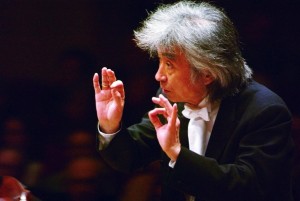
- Maestro Seiji Ozawa, artistic director of Carnegie Hall’s JapanNYC festival. (Mark Corke/New York Observer)
By JQ magazine’s Justin Tedaldi (CIR Kobe-shi, 2001-02) for Examiner.com. Visit his NY Japanese Culture page here to subscribe for free alerts on newly published stories.
Starting this Saturday, Carnegie Hall’s JapanNYC festival will unveil its first citywide series of musical performances. Led by artistic director Seiji Ozawa, who is best known for his record-setting 29-year career as music director of the Boston Symphony Orchestra, the festival’s musical highlights next week will see Maestro Ozawa helming rare overseas concerts by the Saito Kinen Orchestra with conductor Tatsuya Shimono, pianist Mitsuko Uchida and others, plus tributes to the legendary late composer Tōru Takemitsu, considered by many to be Japan’s greatest composer.
Additionally, as part of the Works & Process series at the Guggenheim Museum, a series of performances of Prokofiev’s Peter and the Wolf—performed by the Juilliard Ensemble and George Manahan with visual art by Rei Sato of Kaikai Kiki and narration by fashion designer Isaac Mizrahi—will surely delight music fans of all ages.
The performances follow other city exhibitions and ongoing events under the JapanNYC banner that run through next year, including Yoshitomo Nara: Nobody’s Fool at Asia Society, The Sound of One Hand: Paintings and Calligraphy by Zen Master Hakuin at Japan Society, and On Becoming an Artist: Isamu Noguchi and His Contemporaries, 1922-1960 at The Noguchi Museum in Queens.
JapanNYC returns in March and April 2011 with three weeks of events across New York City, including performances of classical, jazz and traditional Japanese music; contemporary theatre and visual art; noh theater and kyogen plays; modern dance; film; taiko drumming and more.
Click here for the complete performance schedule.
Matt Leichter (matt [dot] leichter [at] gmail [dot] com) (Saitama-ken 2003-05) is a renegade attorney who plays by his own rules. He operates a think tank of one, The Law School Tuition Bubble, where he archives, chronicles, and analyzes the rising cost and declining value of legal education in the United States. He also maintains the “Bankruptcy Legal Topics,” and, “Bankruptcy Billables,” sections for Steven Horowitz’s Bankruptcy Bill. For further reading regarding JETs and the law, he recommends JETs with J.D.s.
Take a break, and listen to some Rock & Roll, primate!
Interview with Guitar God John McLaughlin
By JQ magazine’s Justin Tedaldi (CIR Kobe-shi, 2001-02) for Examiner.com. Visit his NY Japanese Culture page here to subscribe for free alerts on newly published stories.
Whether you call it electric jazz, fusion, or just good old music, John McLaughlin is the forefather of this style on the six string. From his contributions on classic albums by Miles Davis starting with the landmark In a Silent Way in 1969 to his own work with the massively influential Mahavishnu Orchestra and as a solo artist, McLaughlin is a legend who has continued to record with no signs of slowing down.
His 2009 collaboration with Chick Corea, Five Peace Band, won the Grammy Award for Best Jazz Instrumental Album earlier this year, and in April McLaughlin then released his new disc with the 4th Dimension, To the One (Abstract Logix). Following a concert at New York’s Town Hall last weekend, the artist graciously took the time to answer some questions.
Tell us about your history with Japan. What attracted you most to the culture?
I’ve been studying the cultures of Asia for many years, and I’m very attracted to the culture of Japan, in particular to the impact Zen has had on the Japanese mind and spirit. That said, any in depth study of Zen will bring you to China and the culture of Chan, the forerunner of Zen. In my opinion, there is one singular problem with religions in general: they are exclusive. To me, this exclusivity is not right. Zen and Chan’s “ways” of discovery are non-exclusive. They speak about the reality of everyone having Buddha nature, and the potential of realizing it. This is the aspect of Zen and Chan that appeals to me strongly: the non-discrimination and inclusivity of everyone.
Are there any Japanese musicians of whom you’re a fan? What other kinds of Japanese performing arts do you enjoy?
I am less of a fan of Japanese music than I am to the poetry of haiku strangely enough, though I do enjoy the koto and shakuhachi music. The Zen calligraphy is something for which I have a great admiration.
Why do you think the Japanese possess such a great interest in jazz?
For sure the answer lies in the culture of the Japanese mind. Perhaps because the spontaneity of jazz appeals to their innate sense of honesty. In improvisation, jazz or otherwise, there’s no room to lie.
Click here to read the rest of the interview.
Interview with Jazz Musician Keiko Matsui
By JQ magazine’s Justin Tedaldi (CIR Kobe-shi, 2001-02) for Examiner.com. Visit his NY Japanese Culture page here to subscribe for free alerts on newly published stories.
Contemporary jazz icon Keiko Matsui began playing piano at the age of five. With sales of over 1.2 million units in the U.S. and sold-out appearances at concert halls across the world, she is one of the most recognized artists in the genre.
In addition to being the first Japanese artist to top Billboard’s contemporary jazz chart, she actively supports a range of charities, including the Y-Me Breast Cancer Organization. United Nations World Food Programme’s efforts in Africa, and California for A3M’s charity for the National Marrow Donor Program.
Matsui is now putting the final touches on her latest album, due early 2011 with Shanachie Records. I spoke with her prior to her debut three-night stand happening next week at New York’s venerable Blue Note Jazz Club.
Congratulations on your very first show at New York’s Blue Note. How do you feel about playing there and what do you expect?
Of course in New York, Blue Note is a legendary place, and I’m very happy to be there. At the same time, I have toured in many different countries, and I always feel very fortunate at the concerts to feel that music connects us beyond the culture, history, country, everything. So, I really feel that this experience at Blue Note will be very special.
When did you first come to the U.S.?
In the early ’80s.
What did you do there?
At that time, I was invited to Los Angeles by Yamaha for a special recording. I was also a student, and had the opportunity to make a sample album with Vinnie Colaiuta and Nathan East. That was my first visit to the U.S., and also my first recording there. I invited Vinnie to record on my new album, so I’m glad to see him again.
What were your memories of that experience? Did you have any culture shock?
I only had one week there, so of course I didn’t know much about the music scene in the U.S., but I was so entranced by Nathan and Vinnie’s playing. It was great creating music together with great musicians, but at that time they were so open. Maybe this is a cultural difference, because Japanese language is based on politeness and different words depending on who you talk to, but English doesn’t have that. So, Japanese people speak really strictly, I felt.
You’ve had a successful career for a long time. Why have you decided to play Blue Note now?
That’s true. For me, that’s something I’m kind of questioning myself, too. [laughs]
Click here to read the rest of the interview.
Bo-Peep’s US tour
For more info, visit www.examiner.com/japanese-culture-in-new-york/tokyo-s-bo-peep-rocks-the-northeast.
Hokkaido JET Annual Musical Production Tradition Continues
Snow, Sea and Song
Hokkaido’s hills are alive with the sound of music, thanks to the efforts of its ALTs
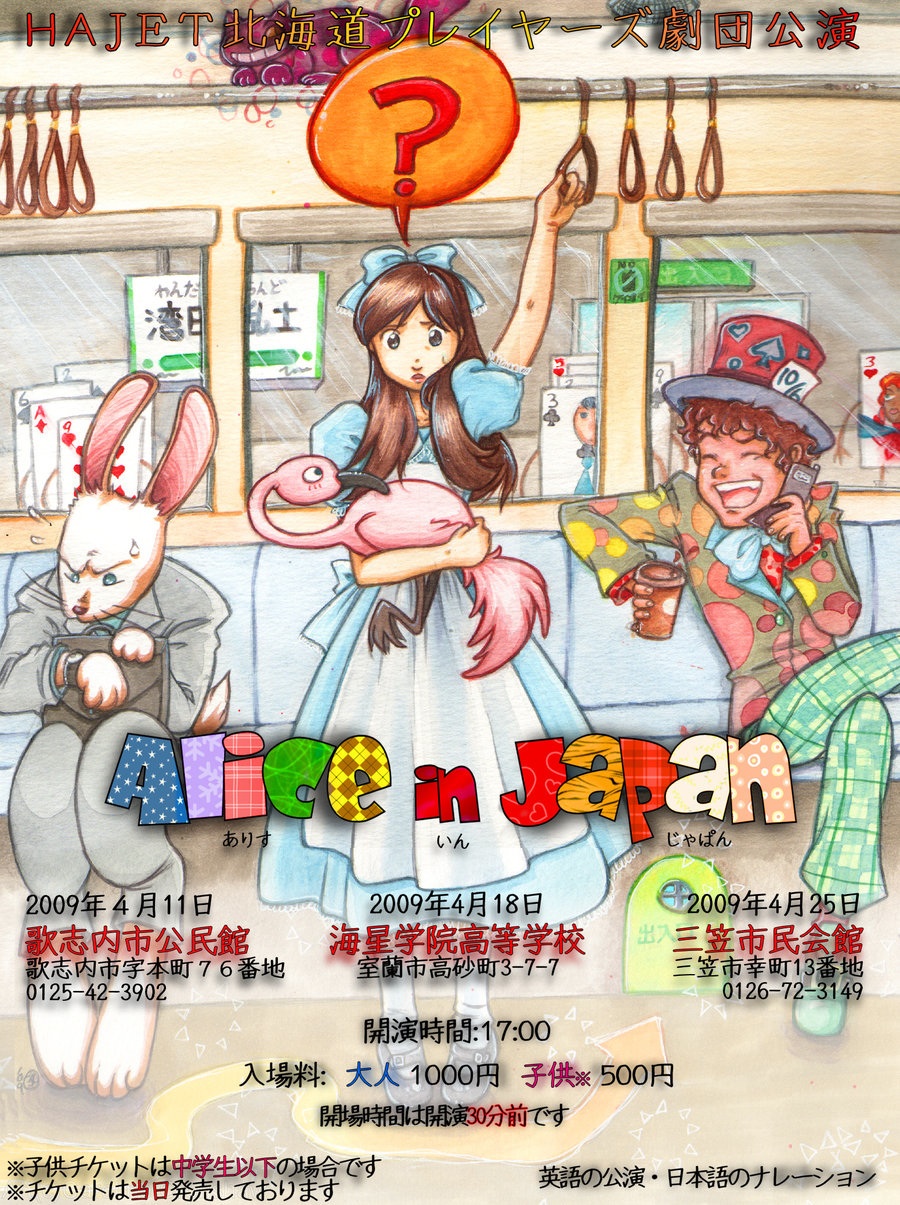 By Caroline Cronshaw (Hokkaido, 2006-09) – Caroline is an amateur illustrator and instructor at the University New Brunswick in Saint John, New Brunswick, Canada. She has painted and designed posters for the HAJET Hokkaido Players’ productions for the past four years, and is currently working 2011’s poster as of this article. Her work can be seen at http://carrie-ko.deviantart.com.
By Caroline Cronshaw (Hokkaido, 2006-09) – Caroline is an amateur illustrator and instructor at the University New Brunswick in Saint John, New Brunswick, Canada. She has painted and designed posters for the HAJET Hokkaido Players’ productions for the past four years, and is currently working 2011’s poster as of this article. Her work can be seen at http://carrie-ko.deviantart.com.
Whether they choose to go to Hokkaido or not, several hundred new JET participants, some of whom have never seen a snowflake before in their lives, come to live on the northernmost island in the Japanese archipelago each year.
Hokkaido, with its vast tracts of wilderness and ghostly former coal mining towns, can cause even the most steadfast and Canadian of JETs to surrender to homesickness and cabin fever during its long and snowy winters. It’s those same cold and white expanses that probably inspired the Ainu peoples to come up with place names like Shiretoko – ‘the ends of the earth’. Indeed, it’s not easy being a homesick alien living in a half-buried BOE-owned hut in midwinter.
Thankfully, however, the ALTs of Hokkaido have come up with an unusual cure for the winter blues: musical theatre.
Since the mid-1990s, denizens of many Hokkaido communities have been witness to a mysterious caravan of vans and cars rumbling into town on a Friday night and parking in front of a local community centre or temple. These vehicles, laden with wooden planks and props, belong to none other than the members of the HAJET Hokkaido Players, an amateur theatre troupe comprised of JET participants from across the island. While some members do have experience in acting or stage production, there is no requirement except dedication and the desire to help bring international understanding to the people of Hokkaido. The troupe is partly administered by HAJET, the Hokkaido AJET chapter, and is entirely non-profit. If there is money left over or gained from performances, most of it is used to sponsor the Hokkaido English Challenge, an annual non-profit English-language summer camp program also organized by HAJET. The rest of the profit is saved for next year’s show.
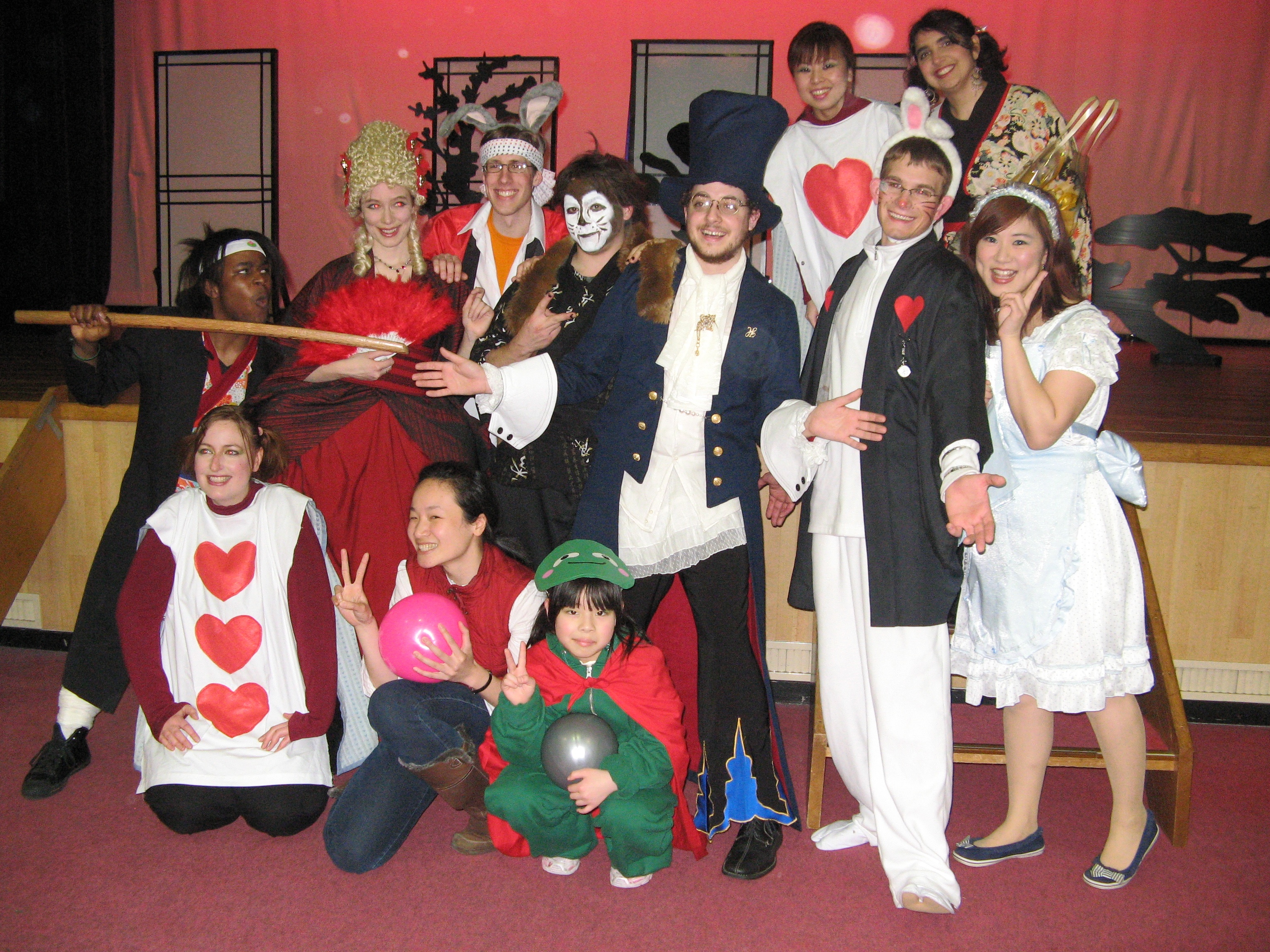 Among the various Broadway staples the HAJET Hokkaido Players have performed are such familiar titles as West Side Story, Annie, Peter Pan, Oklahoma!, and Guys and Dolls. They also on occasion perform original works, such as 2009’s Alice in Japan, originally written by ALTs in Niigata. This year’s production will be an original play based on The Jungle Book (the Kipling novel, not the Disney adaptation). According to the Players’ current director, Melissa Golden, the production will incorporate elements of Bollywood cinema and traditional Indian costume, as well as make use of Lion King-style animal masks.
Among the various Broadway staples the HAJET Hokkaido Players have performed are such familiar titles as West Side Story, Annie, Peter Pan, Oklahoma!, and Guys and Dolls. They also on occasion perform original works, such as 2009’s Alice in Japan, originally written by ALTs in Niigata. This year’s production will be an original play based on The Jungle Book (the Kipling novel, not the Disney adaptation). According to the Players’ current director, Melissa Golden, the production will incorporate elements of Bollywood cinema and traditional Indian costume, as well as make use of Lion King-style animal masks.
The Players start planning their productions early in the year, around the end of August when the newbies first arrive from overseas. Recruitment is usually done around early to mid September during the various welcome parties (with an island that big, you’d need to have several parties), and the first rehearsal is typically scheduled for later in the month or in early October. From that point onward, it’s full speed ahead, and anyone who can’t commit will be left in the dust. Despite the subject, it’s serious business.
Depending on the show and the wishes of the director, the English script is augmented with either lines in Japanese, framed scene-by-scene with Japanese narration, or both. This is to help audience members without English proficiency or previous knowledge of the play to understand what is going on. The Players also do their research in more pop culture-related subjects Read More
By JQ magazine’s Justin Tedaldi (CIR Kobe-shi, 2001-02) for Examiner.com. Visit his NY Japanese Culture page here to subscribe for free alerts on newly published stories.
Fifth generation Japanese American Jake Shimabukuro has been recording music since the late ’90s. At age 33, he’s earned comparisons to Jimi Hendrix and Miles Davis on the ukulele, and will release his latest album, Peace Love Ukulele (Hitchhike) in January. After playing high-profile shows like the Asian American Music Festival in Los Angeles earlier this month for his national tour, the artist answered some questions prior to his upcoming gig at New York’s Highline Ballroom on Oct. 25.
Tell us about Peace Love Ukulele. Do you have a few favorite songs? Why?
Peace Love Ukulele is an album compiled of songs that I hope will bring joy and happiness to listeners near and far. I hope the emotions expressed in the music will connect people and make them realize that we all feel the same things—we just express them differently. I believe music is the greatest gift, and the ukulele is the friendliest way to present that gift to the world. A few favorite tunes on the album include “143,” a song inspired by the pager code 143, which simply means I love you; “Go For Broke,” a song written for the Japanese American veterans who served in World War II; and “Bohemian Rhapsody,” one of my all-time favorite classic rock tunes.
How does this album differ your last studio album?
The new CD, Peace Love Ukulele, is my first independent release. I had a lot of fun putting things together for this album. I really took my time with this one and tried to present the ukulele in ways that were fresh and exciting.
What do you hope people take away from your music?
I hope listeners experience the same joy that I’m experiencing when I’m strumming the ukulele. The ukulele is probably one of the easiest instruments to play. Anyone can pick it up for the first time, learn a couple chords and immediately start strumming songs. It’s so relaxing. I always tell people that playing the ukulele is like an entire yoga session in one strum.
Read the rest of the interview here.
Interview with Japanese indie rockers The Suzan
By JQ magazine’s Justin Tedaldi (CIR Kobe-shi, 2001-02) for Examiner.com. Visit his NY Japanese Culture page here to subscribe for free alerts on newly published stories.
The Suzan is a quartet of Japanese indie rock gals who call New York their home. Bounding between gigs in their native Tokyo and NYC, they’re now prepping a new album, Golden Week for the Poco Poco Beat. I caught up with the group (Saori, vocals and guitars; Rie, guitars and keyboards; Ikue, bass; NICO, drums) in advance of the band’s area shows this week for NickyDigital.com’s CMJ Showcase and Pitchfork.com’s #Offline Festival.
How did The Suzan form?
The Suzuki sisters, Rie and Saori, began making tracks in 2003. After they sent their demos to a Japanese indie label and that label released their songs, the owner of the label told them to organize the band to play shows. Then NICO and Ikue joined.
What does your name refer to?
It is the sisters’ nickname.
The band’s music is an eclectic mix of Western styles. Who are your biggest influences?
The Beatles and Wolfgang Amadeus Mozart.
Earlier this month we’ve had famous Japanese groups like X Japan, Vamps and Puffy AmiYumi playing New York. Did you and your friends get to see any of these shows? What are your feelings about the warm reception these artists have received in the States?
Ikue: Me and my friends didn’t see these shows. I think what they are doing is a good way to show Japan’s recent musical culture (Visuals, animation, etc.). Their ways to approach this are different from ours, though.
At the same time, it’s been difficult for any Asian band to achieve mainstream success here. What are The Suzan’s goals as a group?
NICO: I don’t believe THE SUZAN is an Asian band. We are a worldwide band that was just born in Asia.
Saori: I think it’s difficult to achieve mainstream success for Asian people. But we can do it! This is our goal.
Read the rest of the interview here.
Interview with Satoshi Okamoto of the New York Philharmonic
By JQ magazine’s Justin Tedaldi (CIR Kobe-shi, 2001-02) for Examiner.com. Visit his NY Japanese Culture page here to subscribe for free alerts on newly published stories.
Japanese native Satoshi Okamoto is a double bass player for the New York Philharmonic, a position he has held there since 2003. Prior to that, he was a member of New York City Ballet Orchestra for one year and an assistant principal of the San Antonio Symphony for eight years. Last September, he performed at the New York Philharmonic’s Opening Gala Celebration for its169th season with Music Director Alan Gilbert and Wynton Marsalis’s Jazz at Lincoln Center Orchestra for the U.S. premiere of the latter’s Swing Symphony. I caught up with Okamoto following the performance to learn more about what it’s like to play with an esteemed ensemble.
What were your impressions of this year’s Opening Gala, and what was your favorite thing about it?
I thought it was very successful. The orchestra played very solidly. It was quite a high quality performance. Mr. Marsalis’s music was really nice, too. I always wish for more contemporary composers to use existing rhythm patterns to write music, like the Baroque era. In his piece, there were a lot of those: Charleston, Kanasas City swing, New Orleans parade marches, bebop, and so on. The orchestra was nicely woven into a jazz style music. If I can wish more, it would be nicer and more creative if there are more classical elements in the piece, because it’s a little like big band music played by an orchestra.
What’s it like working with musical director Alan Gilbert and Wynton Marsalis?
I know Alan from my school days in Juilliard. He was conducting the pre-college symphony where I was a ringer (helper). I always have a great time playing under his baton. For me, it comes very natural to synchronize with his music, I would say, more than any other conductor. I don’t really know Mr. Marsalis.
As a musician, what’s the difference between working with an orchestra in Japan compared with New York?
I have never been a regular member of Japanese orchestras, so maybe it’s not totally fair for me to make a comparison. But I think New York has more of an advantage to attract great musicians worldwide. Like the NBA or MLB, you often have to reach outside of your country to grab the best players. Even though Japanese orchestras are becoming international, it’s still harder for them to get the first class players from overseas compared to the New York Philharmonic, which is in a great position to attract the best players around the world. As a result, I’m surrounded by truly amazing musicians and you can’t have this kind of experience except only a few places in the world. I am enjoying it and really appreciate it.
Read the rest of the interview here.
Justin’s Japan: Interview with Yoshiki of X Japan
By JQ magazine’s Justin Tedaldi (CIR Kobe-shi, 2001-02) for Examiner.com. Visit his NY Japanese Culture page here to subscribe for free alerts on newly published stories.
After 25 years of recording and 30 million discs sold, the biggest rock group in Japanese history is finally come coming to New York. X Japan, the pioneers of the elaborate “visual kei” movement, launched themselves with a glam-meets-metal look and sound that instantly set them apart from the pack. After selling out the 55,000-seat Tokyo Dome a record 18 times in its career, X Japan will take Roseland Ballroom Sunday. Band leader/drummer/pianist Yoshiki shared his thoughts with me on breaking America and recording a new album.
For your current North American tour, what are you looking forward to doing in New York and the other cities in the U.S. and Canada?
Do the best X Japan shows EVER. (Love)
Your forthcoming album is going to be almost entirely recorded in English. Since many popular musicians have experienced plummeting CD sales, what are the goals with the new record?
Quality and quantity secondary!
Who is your label in the States? How did you choose them?
We are in the middle of closing the deal. If we come to an agreement, we may be able to announce the label and distributor at the New York show.
Read the rest of the interview here. Click the button below to visit X Japan’s U.S. homepage.
Matt Leichter (matt [dot] leichter [at] gmail [dot] com) (Saitama-ken 2003-05) is a renegade attorney who plays by his own rules. He operates a think tank of one, The Law School Tuition Bubble, where he archives, chronicles, and analyzes the rising cost and declining value of legal education in the United States. He also maintains the “Bankruptcy Legal Topics,” and, “Bankruptcy Billables,” sections for Steven Horowitz’s Bankruptcy Bill. For further reading regarding JETs and the law, he recommends JETs with J.D.s.
Take a break, and listen to some Rock & Roll!
Interview with jazz legend Sonny Rollins
By JQ Magazine’s Justin Tedaldi (CIR Kobe-shi, 2001-02) for Examiner.com. Visit his NY Japanese Culture page here to subscribe for free alerts on newly published stories.
Grammy-winning tenor saxophonist Sonny Rollins began his eighth decade of life Tuesday, and will celebrate with a headlining concert at New York’s Beacon Theatre on Sept. 10. I spoke with the man the New York Times recently called “indisputable jazz royalty” about his relationship with Japan and his inimitable philosophy of life.
What are your thoughts about turning 80?
Well, actually, I don’t think too much about it because I’m a pretty busy fellow. It just so happens that I looked at the calendar, and here I am, 80!
After the New York concert, you have three Japanese gigs in October: Sapporo, Tokyo, and Osaka. Can you describe your history with Japan?
Well, I’ve been going to Japan for many years now, I think—since 1963, maybe. And regularly, I go there…the first time I went to Japan, I was taken by the culture, and I was very much looking forward every time I would get a chance to go back. I used to spend a lot of time in these areas—temples, and examining the Zen Buddhist culture, and the various musical instruments that are indigenous to Japan. My wife and I were very fond of going to the Noh theater, and we used to go there every time we got a chance to when we were in Japan. I really love the culture; I love the Buddhist culture, and that’s old Japan.
So, that’s what I always looked for; sought out; yearned for that; when I was away from Japan. It was always, “Yeah, I wish I could get back and smell the country,” you know? The bamboo forests, the sound of the shakuhachi [Japanese flute], and the very peaceful places. The last time I was there—I was there on vacation recently—and I was at Kamakura, it’s among the places that are really so beautifully serene and peaceful. So I really enjoyed that. Of course, I’ve been to Kyoto many, many times, and Nara, and many other parts of the country.
So, I love Japan. As I said, the first time I went there, I got a feeling of great—when I got off the plane, I just felt happy for some reason. And I felt as if I was rediscovering some place that I’d been to in a previous life or something. And I still maintain those feelings about Japan today.
Was there any hesitation about going there the first time regarding American sentiments after the war? Did you have any impressions that were turned around based on the reception you received?
As you know, music is universal…jazz music is a peaceful force, and it’s received all over the world, and people in Japan are very interested in jazz music. They’re really knowledgeable about the music; they’re very interested in the people that play it, and they love it.
Read the complete interview here.

